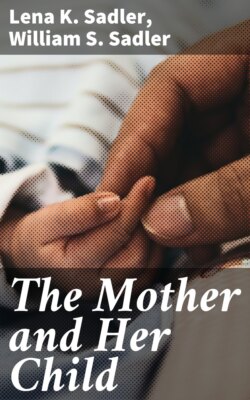Читать книгу The Mother and Her Child - Lena K. Sadler - Страница 111
На сайте Литреса книга снята с продажи.
DANGERS OF TWILIGHT SLEEP
ОглавлениеWhile we are recounting the real and supposed advantages of "twilight sleep"—especially in certain selected cases—it will be wise to pause long enough to give the same careful consideration to the known and reputed dangers and drawbacks which are thought to attend this method of anesthesia in connection with labor cases.
We desire to state that these expressions, both for and against "twilight sleep," are not merely representative of our own experience and attitude; but that they also represent, as far as we are able to judge at the time of this writing, the consensus of opinion on the part of the most reliable and experienced observers and practitioners who have used and studied this method in both this country and Europe. The dangers and difficulties of "twilight sleep" may be summarized as follows:
1. That this method tends to weaken the mental resistance of many women; to lessen their natural courage and to decrease that commendable fortitude which is such a valuable feature of the character endowment of the normal woman.
2. That "twilight sleep" is essentially a hospital method and is, therefore, inaccessible to the vast majority of women belonging to the middle and lower classes of society, as well as to those women who live in rural communities.
3. That in fifteen or twenty per cent, the method fails to produce the desired results—at least, when administered in amounts which are deemed safe.
4. That this method does decrease the baby's chances of living; that the second stage of labor is definitely prolonged; that from ten to fifteen per cent of the babies are sufficiently under the influence of the anesthesia when born as to be unable to breathe or cry without artificial stimulus.
5. That it is a method requiring special training and experience; that it will be many years before the average practitioner will become proficient in its use; and that the older methods are probably far safer for the average physician.
6. That the method requires more care in its administration than can be expected outside of the hospital in order to avoid the dangers of fetal asphyxiation—which danger has led not a few obstetricians to abandon it.
7. That a satisfactory technic is almost impossible of development; that every patient must be individualized; that the chief dangers are connected with the over dosage of morphin; that the method is not adaptable to the general practice of the average doctor.
8. That by prolonging the second stage of labor and by sometimes giving too much morphin, the number of forceps deliveries is greatly increased, with their attendant and increased dangers to both mother and child.
9. That the prospects of passing through labor which may be rendered painless by artificial methods, tends to produce an attitude of carelessness and indifference towards those natural methods of living and other hygienic practices which so greatly contribute to naturally painless confinements.
10. That this method as sometimes practiced greatly increases the dangers of a general anesthetic, if such should be found necessary later on during the labor.
11. That "twilight sleep" is contra-indicated (should not be used) in the following conditions: primary inertia (abnormally delayed and slow labor); expected short labor—especially in women who have already borne children; when the fetal head is known to be large and the mother's pelvis small; placenta praevia (abnormal placental attachment); accidental hemorrhage; absent or doubtful fetal heart beat; when labor is already far advanced; and in threatened convulsions and eclampsia.
